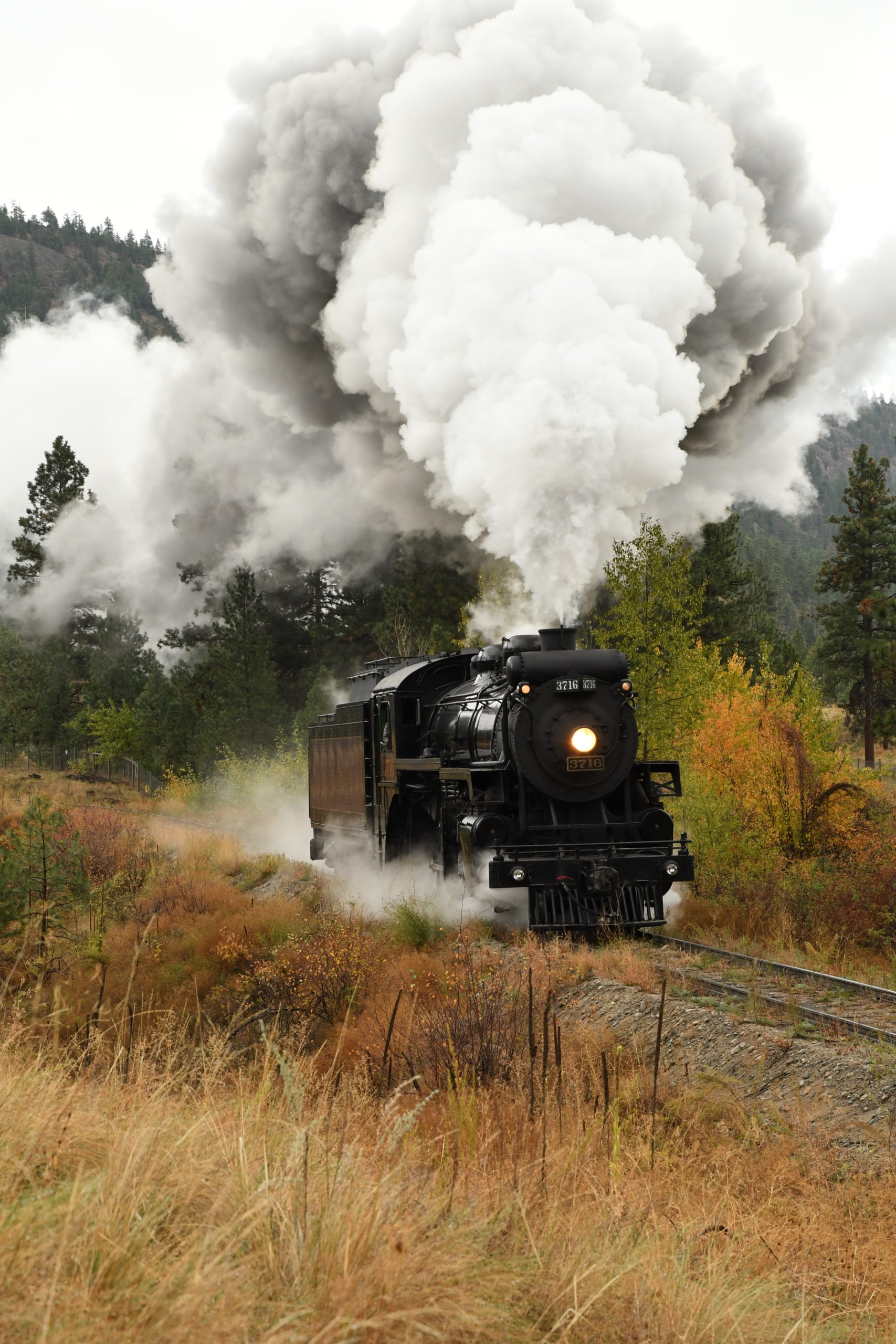All Aboard for National Train Day at Five Passport Places!
Canada’s enduring reliance on the railway officially started with great fanfare on July 21, 1836, when the Champlain and Saint Lawrence Railroad transported its first passengers from La Prairie to Saint-Jean-sur-Richelieu, Quebec. “Railway mania” would take hold in Canada, persuading politicians and entrepreneurs to notice the benefits of a transcontinental railway: the Canadian Pacific Railroad (CPR). Westward expansion and development often spelled significant and lasting negative impacts on Indigenous communities, as well as dire working conditions for over 15,000 Chinese labourers in the name of Nation building. For decades, the CPR (built 1881-1885) was the only practical means of long-distance passenger transport in most regions of Canada. Until it is safe to travel again, join us for National Train Day (May 8) through five heritage sites with important connections to the railway history in Canada.
Kettle Valley Steam Railway – Summerland, BC
Built from 1910 to 1915, the Kettle Valley Railway is located in the beautiful Okanagan Valley, amid lush landscapes, vineyards, and orchards. Summerland is home to the only preserved portion of British Columbia’s once-longest railroad. Here, visitors can enjoy ten miles of spectacular sceneries in a 90-minute ride. Most notably, the ride stops at Trout Creek Trestle Bridge, which sits an impressive 230 feet above the canyon floor below. Live a century-old experience on board passenger cars pulled by a restored 1912 steam locomotive. Other events include the Great Train Robbery and Barbecue, as well as the magical experience of a steam train decked out in sparkling lights during the holiday season.
Shogomoc Railway Museum – Florenceville-Bristol, NB
The Shogomoc Railway Museum is a tale of two railway stations. The original Bristol station existed on this site from 1910 until its demolition in 1971. A second station located in Florenceville, about five kilometres south and built in 1914, was a mirror image of the Bristol station. In 2000, the Shogomoc Rail Club purchased the Florenceville station and moved it to the current location, creating a reconstructed site around it. Today, the museum offers a guided interactive tour of the 1914 Florenceville Canadian Pacific Railway station with stories from conductors and passengers. Three CPR passenger train cars have been restored and transformed, with two of them serving as an inn, while the third one is a fine-dining restaurant. Due to the site’s importance during the railway era, the Shogomoc Railway Museum is designated a Local Historic Place. The site holds both architectural and historic value, including both the 1914 station and the cars in this designation. One of the cars is believed to have been part of the Royal Train during King George VI’s Royal Tour of Canada in 1937. Over 610 metres of track paint a vivid picture of a little, albeit important, station in the community of Florenceville-Bristol.
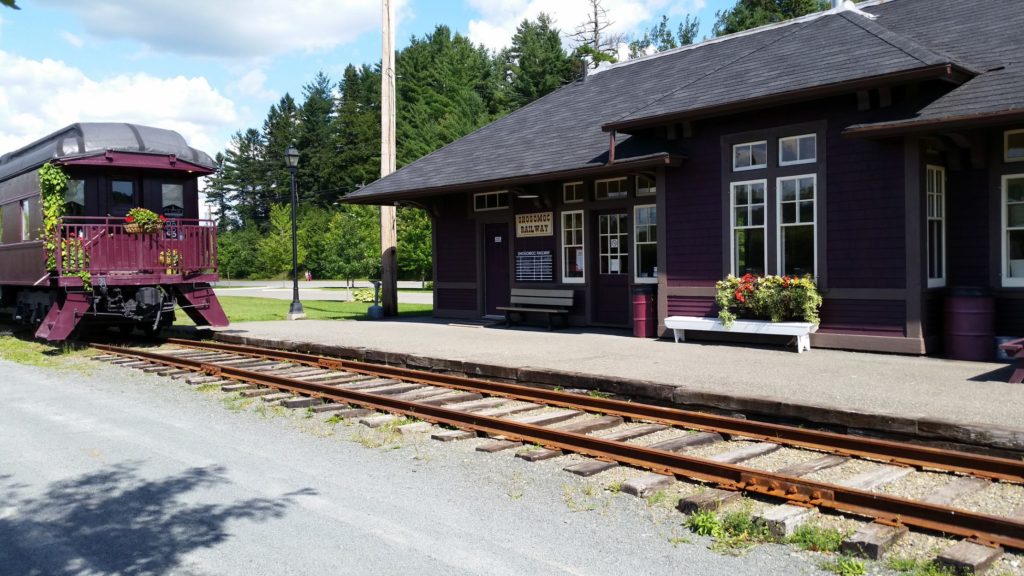
Elmira Railway Museum – Elmira, PEI
Elmira Station is a significant example of railway station architecture in Prince Edward Island and is representative of a common design in many other areas of the Maritimes. Built in 1912, the station served as the end of the line for PEI’s railway for many years. The original station building contained separate waiting areas for men and women, an agent’s office, a separate freight shed, and an engine house. The Island’s passenger service ended in 1964, with the last freight moved in 1989. After years of disuse, the Elmira Station was restored for PEI’s Centennial in 1973. Today, the museum tells the story of the railway in the Island through an original 1943 caboose, a miniature railway experience for kids, a recreated station master’s office and ladies’ waiting room, and a section of the railway track.
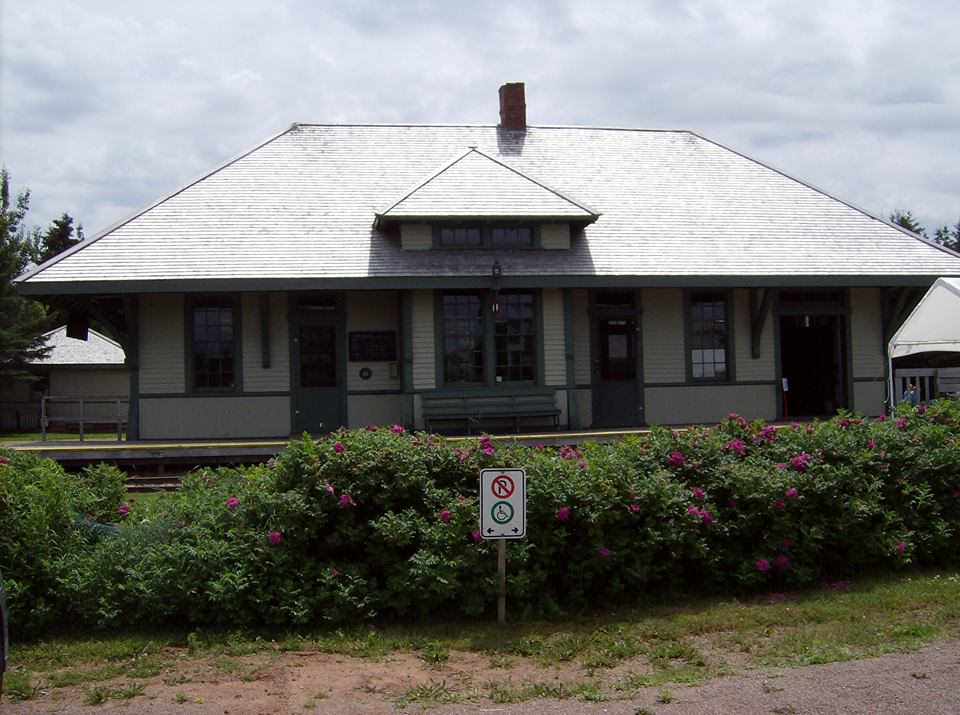
Toronto Railway Museum – Toronto, ON
The Toronto Railway Museum is located in the John Street Roundhouse, a preserved structure from 1931 that is Canada’s best surviving example of a locomotive roundhouse. This area in the city’s downtown is a 17-acre park in the former Railway Lands—a large railway switching yard near Toronto’s former harbour that operated between the 1850s and 1960s. Founded in 2010 by volunteers of the Toronto Railway Historical Association, the museum presents exhibits, tours, educational programs, and publications aimed to broaden the understanding and appreciation of Toronto’s and Ontario’s railway history. Visitors can learn to drive a train inside a railway simulator and walk through a nineteenth-century railway village in Roundhouse Park. Miniature train rides and guided tours are also part of the experience. The museum preserves the physical legacy, history, and experience of the railway, seeking to connect the present with the past and the future of railroading.
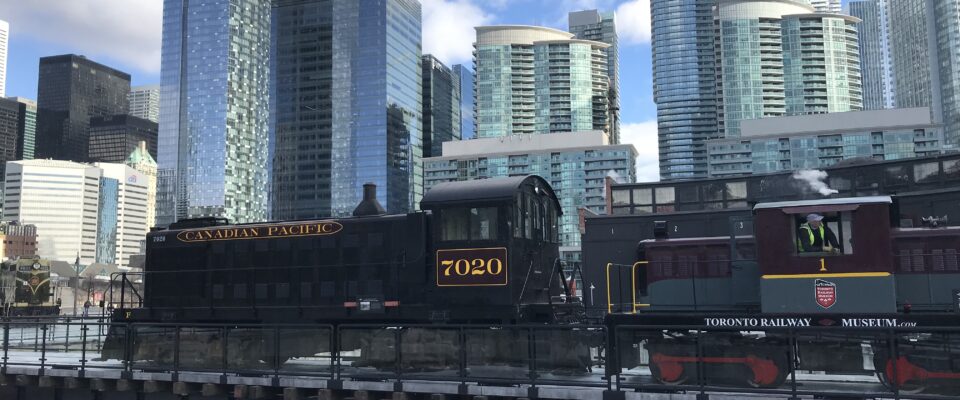
Courtesy of the Toronto Railway Museum. Photo by Museum staff.
McAdam Railway Station – McAdam, NB
Just a few kilometres away from the Maine-New Brunswick border, the McAdam Railway Station was the largest passenger station in the province. McAdam’s location as the junction for passenger traffic between Montreal, the Maritimes, and Boston made this station an important and impressive building that saw up to 16 trains and 2,000 passengers per day. McAdam Station, built in 1900, is representative of the Château style preferred by the CPR. After extensive additions in 1910-1911, the station offered “modern” amenities such as telegraph, dining, and hotel facilities that catered to a distinguished clientele. The station has been a National Historic Site since 1976 and a Provincial Heritage Site since 2003. Today, the McAdam Historical Restoration Commission operates and manages the station. Visitors can explore exhibits that tell the story of the CPR, a restored lunch counter and dining room, waiting rooms, and customs and police offices. Step back in time and keep the station’s famous pie tradition alive by baking your own “Railway Pie” with the McAdam Railway Station Pie Cookbook. With 26 delicious recipes directly from their pie makers, there is a pie for every taste!
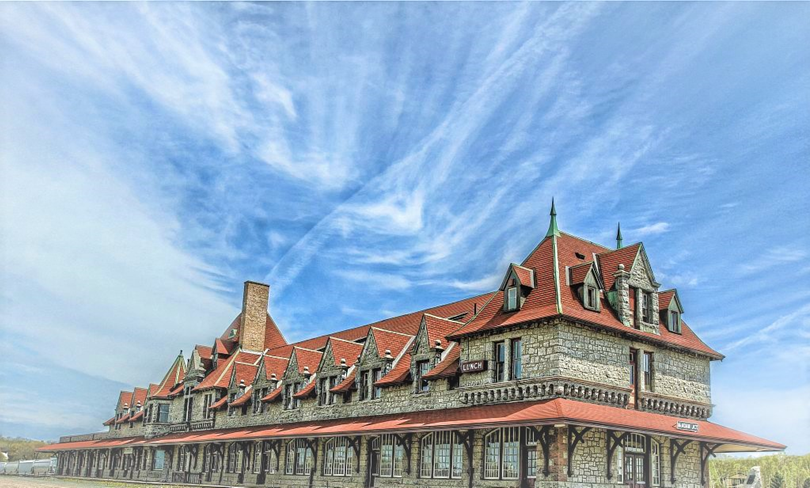
Courtesy of the McAdam Historical Restoration Commission. Photo by Jason Bennett.
Click here to learn about 20 more exciting railway places!
All the historic places above are part of our Passport Places program, a National Trust for Canada membership benefit that provides complimentary access to these beautiful places, as well as 1000+ National Trust Places abroad. Become a member today!

